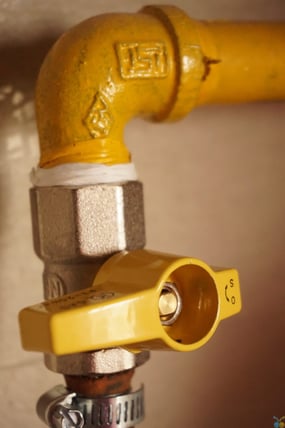The way construction is done is changing in many ways. Builders, developers and investors are migrating from traditional building methods to green building. Green building involves several things, with water efficiency being one of the components. In the United States, water conservation has been a topic of interest for generations. Most people grow up learning to shut off faucets when brushing their teeth and take shorter showers, but what can builders do to create additional water efficiency practices in the home?
The first step in this process is to define water efficiency. Water efficiency is the practice of reducing water waste. This is done by measuring the amount of water needed for a specific purpose. Water efficiency focuses on reducing water waste, while water conservation focuses on reducing overall use.
The U.S. Green Building Council says, “According to the United Nations, water scarcity affects more than 40% of the global population, and the Environmental Protection Agency estimates that 40 U.S. states will have water shortages by 2024.” These numbers can be improved by water efficiency implementations in homes and buildings worldwide.
As a residential builder, there are a few things you can do to create water efficiency in new home builds, remodels and renovations. Using insulated pipes and tanks, regulated shower fixtures, greywater and rainwater collection, pressure reducing valves and helping control toilet flushing are all ways water efficiency can be impacted in a home.
Insulated Pipes & Tanks – Not only does this help with heating and cooling of water and maintaining temperatures, which means less wasted water as you wait for hot water to shower or wash dishes, but it also reduces the energy use of a home. If you’re doing a renovation or a fix-flip home, insulating all of the pipes can be problematic. In these cases, controlling water flow is a nice alternative.
Regulated Shower Fixtures – This fix applies more to multi-unit buildings than single homes, however these fixtures can make a difference in any unit. The fixtures help control how much water flows through a showerhead. Less water flowing through is less water waste created.
The Water Scrooge has some good tips for shower water saving, too.
Gray Water & Rainwater Collection – Gray water is water that has already been used, like the water from a shower or laundry drainage. There are systems that can collect this water, treat it, and place it back in the queue to be used. It should only be used for non-consumption purposes like toilet flushing. Rainwater collection works in a similar fashion. The cost for setting these processes up isn’t small, so it’s most effective in larger, multi-unit buildings. Rainwater collection is illegal in some states, so if you are considering this option, be sure to check your state’s regulations before implementing it.
Pressure Reducing Valves – This is especially important in taller residential buildings where pressure may be lost because of the number of units and fixtures drawing water. Because of this, many builders will use booster pumps, which creates increased flow causing waste. Pressure-reducing valves should be installed to prevent this, and in many cases is mandated by plumbing code.
Controlling Toilet Flushing – While you can’t control how often people use the toilet, you can control some of the waste generated. Newer toilets use 1.6 gallons of water per flush, or less, but old flappers and leaks can still create additional waste. Make sure toilets installed in your homes or multi-unit properties are properly calibrated to ensure waste reduction.
Water efficiency is fast becoming a global effort. According to the United Nations, “40 per cent shortfall in freshwater resources by 2030 coupled with a rising world population has the world careening towards a global water crisis. Recognizing the growing challenge of water scarcity the UN General Assembly launched the Water Action Decade on 22 March 2018, to mobilize action that will help transform how we manage water.” Ensuring that your projects are implementing proper water efficiency protocols will aid in the reduction of this number so that globally, more people have access to fresh, clean water for consumption and use.

Recent Posts
- Spec Construction Loans: A Spec Line of Credit Is Worth the Paperwork
- Spec Homes and Pre-Sale Homes: The Relative Benefits for a Spec Builder
- How a Lender Sees Spec Construction Success: Insights for the Investor Builder
- How Is a Spec House Different From Other Kinds of House Construction?
- How a Private Lender Compares to a Bank Lender for a Spec House Construction Loan
